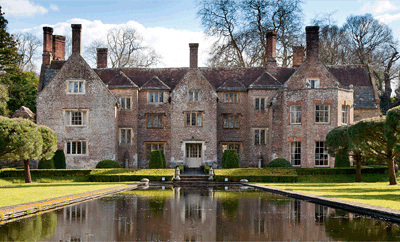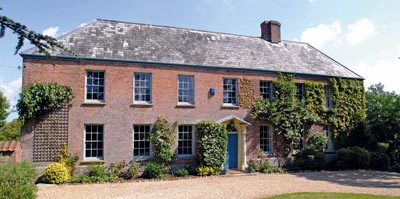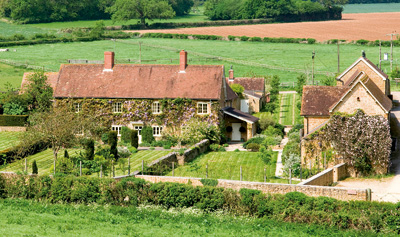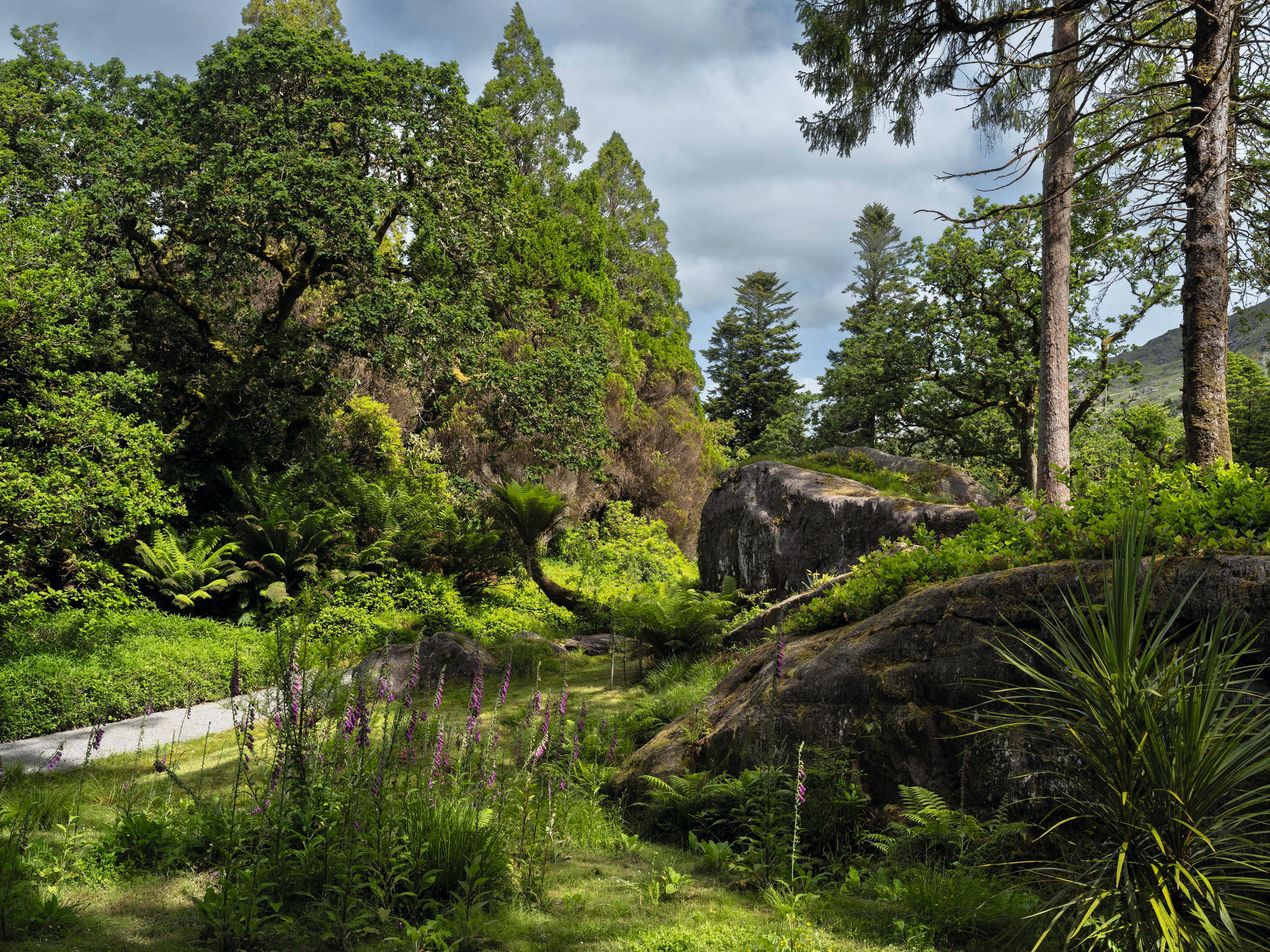Exceptional West Country houses for sale
Head to Devon, Dorset and Somerset for peace and quiet and some of the finest properties for sale in Britain

It's hardly surprising that dreamy, Grade I-listed Bloxworth House near Wareham, Dorset, was chosen as one of the main locations for John Schlesinger's 1967 adaptation of Far from the Madding Crowd, when it was used as the home of Thomas Hardy's heroine, Bathsheba Everdene, played by Julie Christie. More surprising, perhaps, is the fact that, almost half a century later, the exquisite red-brick manor house- built on an E-plan by George Savage in 1608, altered in the 18th and 19th centuries and substantially restored in about 1970-is as tranquil and noise-free now as it was then.

Bloxworth House, £4m, Savills
One of the earliest examples of a brickbuilt country house in Dorset, Bloxworth House stands in eight acres of gardens and grounds designed by Martin Lane Fox, doyen of landscape gardeners, who bought it in 1997. It's now for sale through Savills (01202 856800) at a guide price of £4 million. Bloxworth House was bought by Henry Trenchard in 1689 and owned by the Trenchards and their descendants until 1964, when the estate was broken up and sold off.
In the early 19th century, the west wing was re-modelled, with the addition of a large two- storey bay window, which helped to create the present splendidly proportioned drawing room. There is a fine 17th-century fireplace in the hall and some lovely 18th-century examples on the first floor. There are two staircases: an early-17th-century one in the east tower and a reconstructed stair turret adjoining the west wing. Bloxworth's 7,920sq ft of accommodation includes four reception rooms, a kitchen/breakfast room, vaulted wine cellars, a family room, eight bedrooms and five bathrooms.
It also boasts some wonderful listed outbuildings: a mid-17th-century range of stabling, partly converted to a three bedroom guest cottage; an early- 17th-century brew-house; a vaulted ice house; a late-17th-century pump house; and a two-storey, 18th-century dovecote. Behind the stable block is a courtyard with a Georgian-style stone-edged plunge pool-a replacement for the existing swimming pool, which, in the designer's view, was out of keeping with the landscape.
* Subscribe to Country Life and save; Get the Ipad edition
Mr Lane Fox outlines the meticulous planning that went into the creation of the gardens that are Bloxworth's crowning glory: ‘Whatever the Bloxworth gardens may have been, they had lost their looks by the time we arrived in 1997. The 17th-century house and its marvellous outbuildings remained, alone in acres of grass and begging for inspiration... the pièce de résistance was to be water, big and deep water in the form of an ornamental canal... surrounded by wildflower meadows.
Sign up for the Country Life Newsletter
Exquisite houses, the beauty of Nature, and how to get the most from your life, straight to your inbox.
The main building, all three storeys of it, plus a steeply pitched roof, would create startling reflections in the water. ‘The bulldozers arrived and major level changes followed. Existing mature trees were moved and a lot of new ones planted. Hard surfaces were ruthlessly laid out in order to delineate and emphasise the design framework.
The new garden includes two acres of boundary woodland, which I found, at a late stage, to have very acid soil, so I cleaned it out and filled it with magnolias, camellias, Cornus, Embothrium and rare and interesting ericaceous plants.' For Mr Lane Fox, everything combines to make Bloxworth ‘a most quiet and restful place: visiting and resident birds, 30 species of butterfly, deer, badgers, foxes and other inhabitants will testify to that'.
Across the county border in Somerset, Grade II-listed Charlton Manor at Creech St Michael, near Taunton, is another ‘quiet and restful place', set in four acres of landscaped gardens and paddocks in a hidden corner of the countryside, masked by apple orchards, yet only four miles from Junction 25 of the M5. Originally a farmhouse, the manor dates from the 17th century, when the owner was High Sheriff of the county. Built mainly of brick under a slate roof, the house was extended eastwards in the early 1700s and refitted later in the century. In the early 19th century, the west front was remodelled and its northern half more or less rebuilt.

Charlton Manor, Knight Frank £1.45m
The entire house-which has four reception rooms, seven bedrooms, four bath/shower rooms and extensive attics -has been meticulously renovated in recent years and the gardens landscaped to provide secluded and sheltered terraces. Amenities include a traditional barn, an indoor swimming pool and an all-weather tennis court. Knight Frank (01392 423111) quote a guide price of £1.45m.
Originally part of the Hobhouse family's Hadspen estate, charming Welham Farm at Welham, three miles south of Castle Cary, Somerset, was bought by its present owner in 1988, the first time it had ever been sold. Built of honey-coloured local stone, the 4,680sq ft main farmhouse -unlisted, although records show a dwelling on the site since 1680-is a typical Somerset longhouse extended and modernised in recent years to provide four reception rooms, a kitchen/ breakfast room, eight bedrooms and four bathrooms.

Welham Farm, £2.4m, Strutt & Parker
Strutt & Parker (01722 344010) quote a guide price of £2.4m for Welham Farm, which stands in 16.8 peaceful acres on the edge of the estate, and comes with a separate threebedroom cottage, offices, a splendid party barn, outbuildings and excellent equestrian facilities.
Over the centuries, Devon's secret valleys have provided the setting for some of the county's most fascinating houses. There is something of a mystery about the origins of secluded Brick House at Mamhead, near Exeter, which stands in glorious open countryside between the eastern slopes of Haldon Hill and the Exe estuary, a landscape that has changed little since the late 1700s, when Rev John Swete sketched the house for Travels in Georgian Devon.
At the time, Brick House was apparently just ‘a shell', its owner David Long, a former High Sheriff of the county, having ‘died ere he saw its completion', but the beauty of its setting was enough to send Rev Swete into raptures. The house is described as being ‘seated on a knoll, whose declivity has just commenced... The ground before it sinks gradual [sic] into a little winding Valley which is closed in with hills richly in several parts covered with oak woods, into whose bosom no less than three Rivulets pour their crystal waters, and there uniting, form a stream of some consequence, which empties itself at the sod into the Exe near the Southern extremity of Starcross'. No one quite knows who completed the house, one of few brick-built country properties to be found in Devon, but Richard Addington of Savills (01392 455745)-who quotes a guide price of £1.25m for Brick House, listed Grade II*, with 30 acres of land-can't help thinking that it may have some connection with nearby Mamhead House, then the seat of the Earl of Lisburne.

Brick House, Savills, £1.25m
Although its original form is uncertain, Swete's watercolours show that the house was built in two blocks, of which only one survives. It then became a farmhouse, but by the 1960s, it was more or less derelict, and later rebuilt as a compact, two-storey house with two reception rooms, a study, a kitchen, four bedrooms and two bathrooms.
In 2012, listed-building consent was granted to allow the reinstatement of the original higher roof, the removal of the existing modern wing and the linkage of the main house to the brick barn beside it, which, if implemented, would create a much larger and more impressive country house.
The idyllic setting of Brick House is enhanced by the mature formal and kitchen gardens established by its present owners, who have also landscaped an area of lovely indigenous woodland to provide pathways, clearings and a wildlife pond fed from one of the property's legendary streams.
They've also created a three-acre vineyard, which, according to Mr Addington, already produces ‘a very drinkable rose.' What could be more idyllic?
* Follow Country Life property on Twitter
Country Life is unlike any other magazine: the only glossy weekly on the newsstand and the only magazine that has been guest-edited by HRH The King not once, but twice. It is a celebration of modern rural life and all its diverse joys and pleasures — that was first published in Queen Victoria's Diamond Jubilee year. Our eclectic mixture of witty and informative content — from the most up-to-date property news and commentary and a coveted glimpse inside some of the UK's best houses and gardens, to gardening, the arts and interior design, written by experts in their field — still cannot be found in print or online, anywhere else.
-
 Everything you need to know about private jet travel and 10 rules to fly by
Everything you need to know about private jet travel and 10 rules to fly byDespite the monetary and environmental cost, the UK can now claim to be the private jet capital of Europe.
By Simon Mills Published
-
 'I'd willingly give a year of my life for a fortnight there': The green dream that is the garden of Derreen
'I'd willingly give a year of my life for a fortnight there': The green dream that is the garden of DerreenExotic woods, labyrinths of narrow, mossy paths and thousands of tree ferns make this an internationally important garden, writes Charles Quest-Ritson. Photographs by Jonathan Hession.
By Charles Quest-Ritson Published
